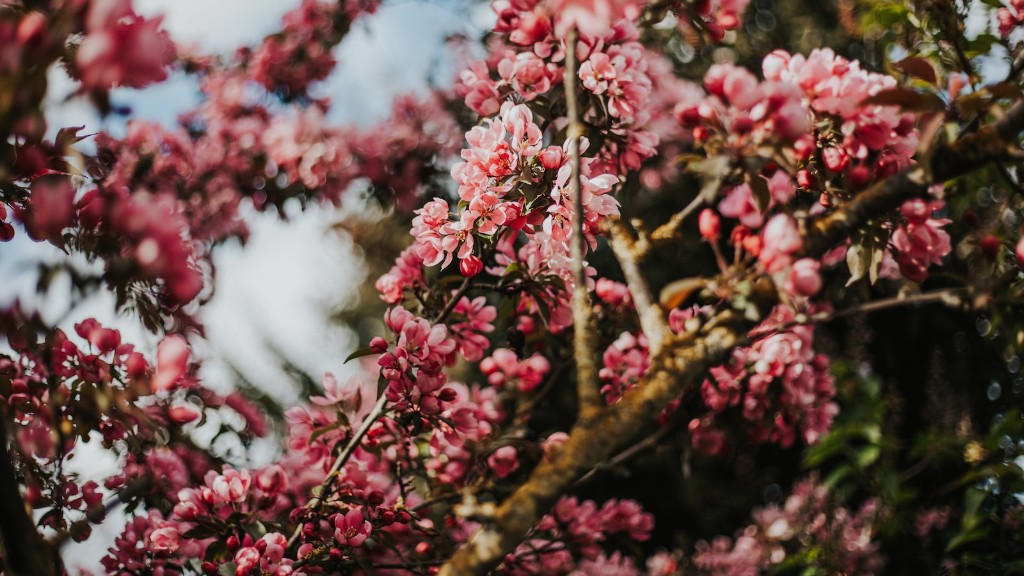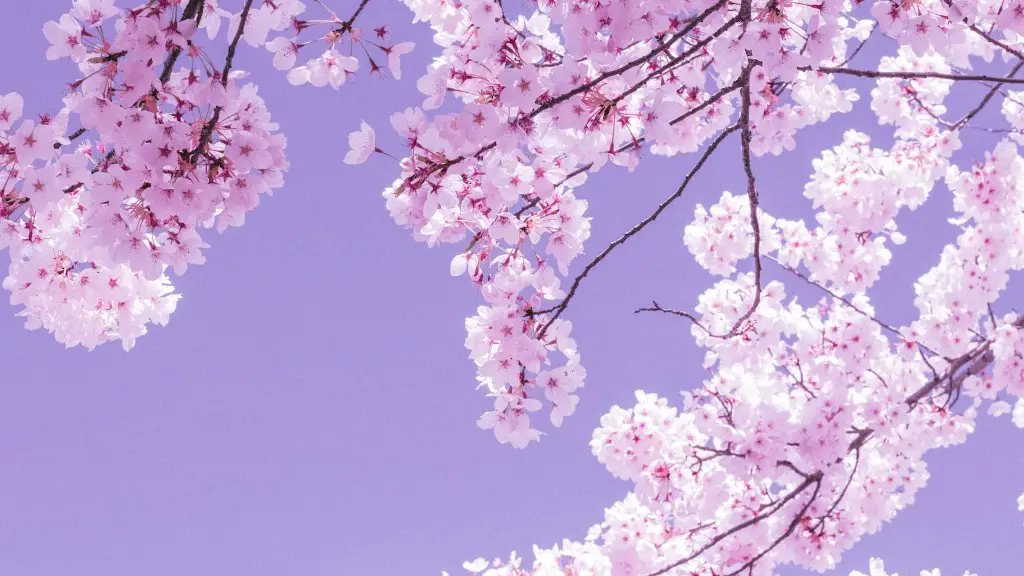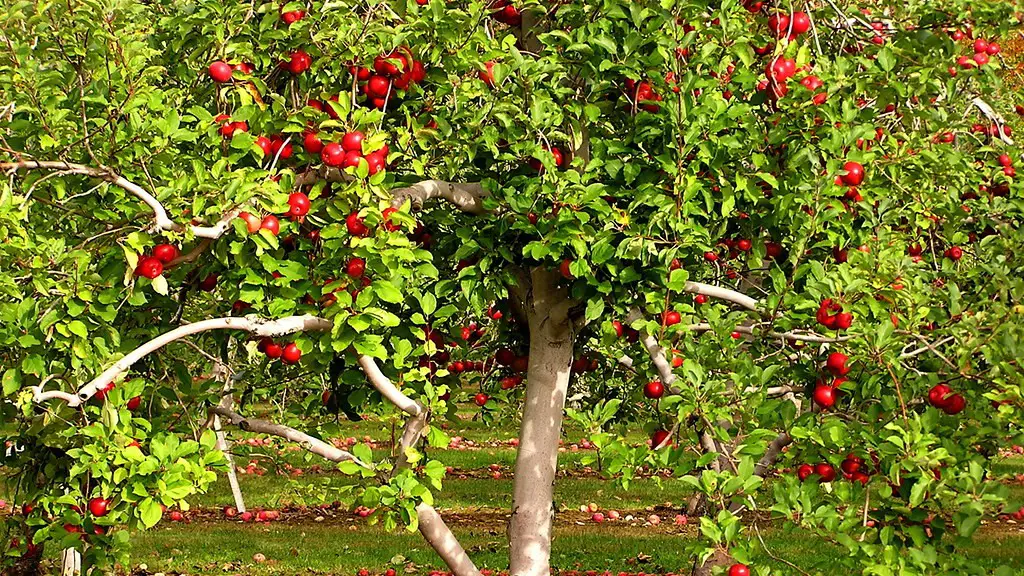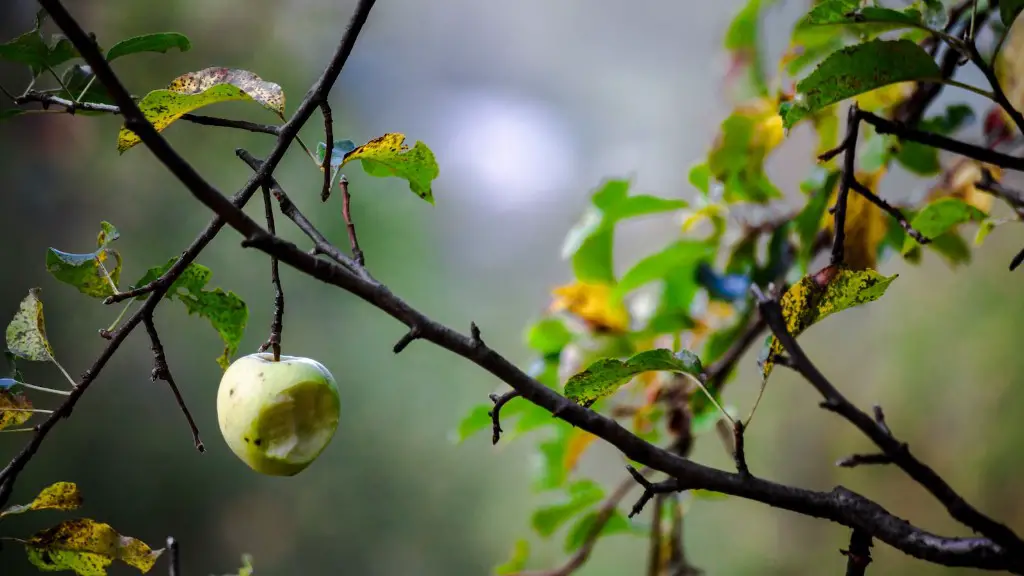Ever wondered why you tend to find cherry trees sprouting with vibrant, colourful leaves during one season and absent of much foliage during the other? Here’s an informative look into when cherry trees lose their leaves. Every deciduous tree, including the cherry tree, is programmed to drop its leaves between the months of October and April. The exact timing of this process, however, largely depends on the region, climate and type of tree.
Cherry trees are renowned for their ability to resist a variety of environmental occurrences such as outbreaks of common cherry tree pests, poor weather and/or soil conditions. The fact that the tree is deciduous not only contributes to its strength but also makes it vulnerable in more ruthless months. It’s a way of nature’s survival: deciduous trees are designed to hibernate during cold weather in order to gain energy and resources in the hotter months.
When colder weather strikes, the cherry tree triggers biological processes to help it preserve its yield of energy. These processes include a decrease in hormone regulation, changes in branch growth and loss of leaf colour, size and water content. Consequently, the leaves on the tree begin to dry out and lose their green translucency.
When it reaches its full state of hibernation, the tree’s chlorophyll will be nearly depleted, and the leaves and fruits turn brown. The tree will then finally ‘abandon’ the withered remains of its old leaves, ready to regenerate and re-emergence in the spring. During this period, the cherry tree only experiences a minimal amount of ‘active’ growth and does not suffer any significant losses.
The temperature also plays an importance role in when a cherry tree loses its leaves. Normally, sweet cherry trees (Prunus avium) will enter dormancy when the temperature drops below 10°C and sour cherry trees (Prunus cerasus) will enter dormancy when the temperature drops below 5°C, however this can vary in relation to other exterior forces.
These include soil conditions, sun exposure and even water availability. For example, a cherry tree that’s situated in a warmer and drier area will start to lose its leaves sooner compared to a cherry tree planted in a heavily shaded and wetter area.
What Happens to Trees Without Leaves?
When a cherry tree loses its leaves during the autumn, it enters a period of dormancy known as quiescence. During this period of rest, the tree’s essential systems shut down to conserve energy and resources. Even though the tree may appear dead, all the essential systems that keep it alive still active – the only difference being is the zero output visible to the naked eye.
One thing to remember when the leaves fall is that there is more that transpires behind the scenes than what meets the eye. Many scientists believe that without the fall of the leaves, trees, including the cherry tree, would wither and die. This is because trees require the loss of old, flaccid leaves in order to gain the energy reserved in new, vibrant ones.
For instance, a tree that cannot sustain the avalanche of shedding leaves is likely to become ‘overburdened’ with dead foliage, impairing its capacity to receive sunlight, nutrients, and water, which is essential for growth. So, losing leaves is vital for the long-term health and growth of the cherry tree.
How to Prepare a Cherry Tree For Winter
When it comes to getting your cherry tree ready for winter winter, there are a few steps you can take to make sure it gets the best of you in the summer months. Firstly, cherry trees should be thoroughly watered for a period of two months prior to winter, as the healthy soil does much to encourage the tree’s growth.
Providing the tree with a two-inch layer of mulch in these months also ensures that the ground stays moist and can absorb more heat from the sunshine on warmer days. Furthermore, removing dead and diseased portions of the tree as well as any broken, slipping or side-branching limbs can help bring the tree into its most desirable shape.
Insect and pest repellants, such as insecticides and horticultural oils, are suggested to the application in late spring, before the flowering period. This will help the tree to reduce common pests during the summer months, which could have caused premature loss of leaves.
Finally, thinning out the cherries of the tree can help to alleviate surmounting pressure from existing branches and provide a more pleasing overall shape when the new leaves decide to sprout.
When Does a Cherry Tree Regain Its Leaves?
As the weather begins to warm up, so does the cherry tree. As soon as the temperature rises above 10°C, trees begin to outgrow their dormancy phase, and their leaves will start to appear fresh and green.
The rehabilitation process usually following the leaf bud-break period. This is when the new buds of the cherry tree begin to swell and the leaves begin to enter their ‘new-born’ stage, gradually expanding and reaching their full size.
Thanks to the cherry tree’s ability to maintain their energy, their leaf regeneration period is much shorter than its preceding dormancy period. It usually takes around a month for the cherry tree to regain its leaves, as this process is driven by longer periods of sunshine and warming temperatures.
But a cherry tree’s life cycle does not end there. Over the summer period, the tree will achieve peak growth and reproduce. At the same time, it will also be actively preparing for the colder months ahead, soaking up vital nutrients in order to accumulate reserve levels and weather a winter’s worth of frost.
What to Consider When Planting a Cherry Tree
When considering planting a cherry tree, consider the importance of its location in relation to the tree’s needs. Select a location that is free of any obstructions and totally exposed to the sun, as it will need a good amount of direct light to reach full bloom.
The desired soil should be moist and well-drained, as well avoid any heavy clay soils. Depending on the type of tree, you may need to space your trees in order to keep the tree happy – an unhampered tree will be much more likelier to sustain the ravages of winter.
When it comes to fertilising the soil, make sure that you can maintain a steady level throughout the year, as the tree will require a good supply in order to sustain its blossoming period. When it comes to pruning, cherry trees require frequent and thorough pruning, cutting off any excess branches to help promote and maintain a favourable shape.
Overall, a cherry tree is best enjoyed when it can thrive in its natural surroundings and soak up the sun’s rays unhindered. With a bit of maintenance and love, you can enjoy blooms and vibrant colours all throughout the year.
What Nutrients Does a Cherry Tree Require?
In order for a cherry tree to grow and retain its vibrant, luscious leaves, it requires certain essential components such as sunlight and water. But, it also requires certain nutrients in more significant amounts.
When it comes to feeding your cherry tree, the most essential and abundant nutrient is nitrogen, which can be found in both organic and inorganic fertilisers. Nitrogen is responsible for the growth and health of the tree and encourages it to become flourishing and bearing in the warmer months.
However, cherry trees also require great amounts of phosphorus and potassium. These two components are essential as they stimulate root formation and promote large, healthy blooms. Other nutrients that help support the cherry tree’s growth and nourishment include magnesium, zinc, calcium and sulphur.
It’s important to choose the right and relevant fertiliser to ensure that your tree has the right balance of nutrients throughout the year. You should remember to apply your fertiliser several months before the dormant season starts to ensure that your cherry tree has enough to sustain it throughout the winter.
Do Cherry Trees Need Protection From Frost?
Yes, cherry trees are like other deciduous trees in that they need protection from frost. The good news is that cherry trees can withstand temperatures as low as -20°C when grown in their natural environment.
Nevertheless, extreme temperatures can cause considerable damage to these trees, including wilting, discoloration and reduction in their productivity. To help protect your cherry tree from extreme temperatures, one should keep an eye out for any conspicuous changes when the winter begins to set in.
When the temperatures dip below 0°C, certain precautions should be taken to ensure your tree’s safety. Such preventive measures include wrapping your tree in burlap or fleece during the night-time hours and extending the amount of water they receive on a daily basis. This will improve the tree’s resistance and greatly reduce any unforeseen losses to your crop.
How Can I Ensure Between-the-season Blooms?
One of the greatest rewards cherry trees offer is their colourful display of blooms throughout the four seasons. But how can you make sure that your cherry tree blooms for more than one season?
In order to ensure blooms between seasons, it is crucial to keep your cherry tree in the best possible condition. This involves providing the tree with adequate amounts of water, nutrients, and sunlight to make sure it remains healthy and verdant.
Pruning is also key to successful blossom maintenance. This technique is necessary to remove any dead or diseased portions of the tree and to help bring the tree into its most pleasing shape. This also means that you should make sure to remove any excess branches and narrow shoots accordingly.
Finally, provided that the cherry tree has enough light and enough water throughout the entirety of the season, it should happily bloom for an extended period. The ideal presentation for a vibrant bloom requires a combination of both a healthy cherry tree and the right environment.




